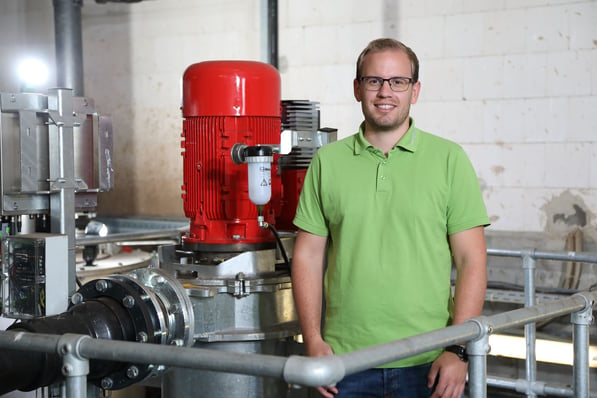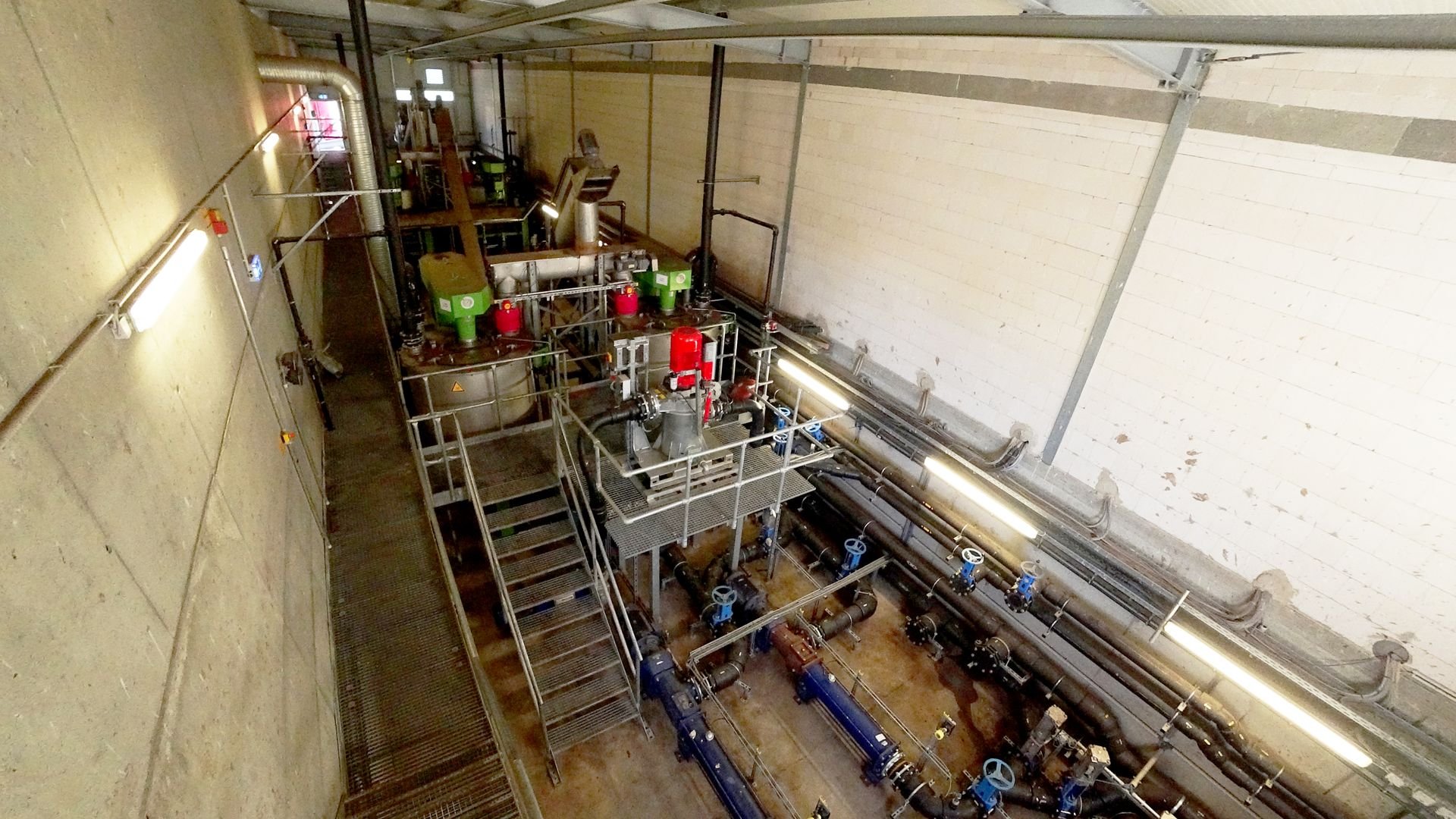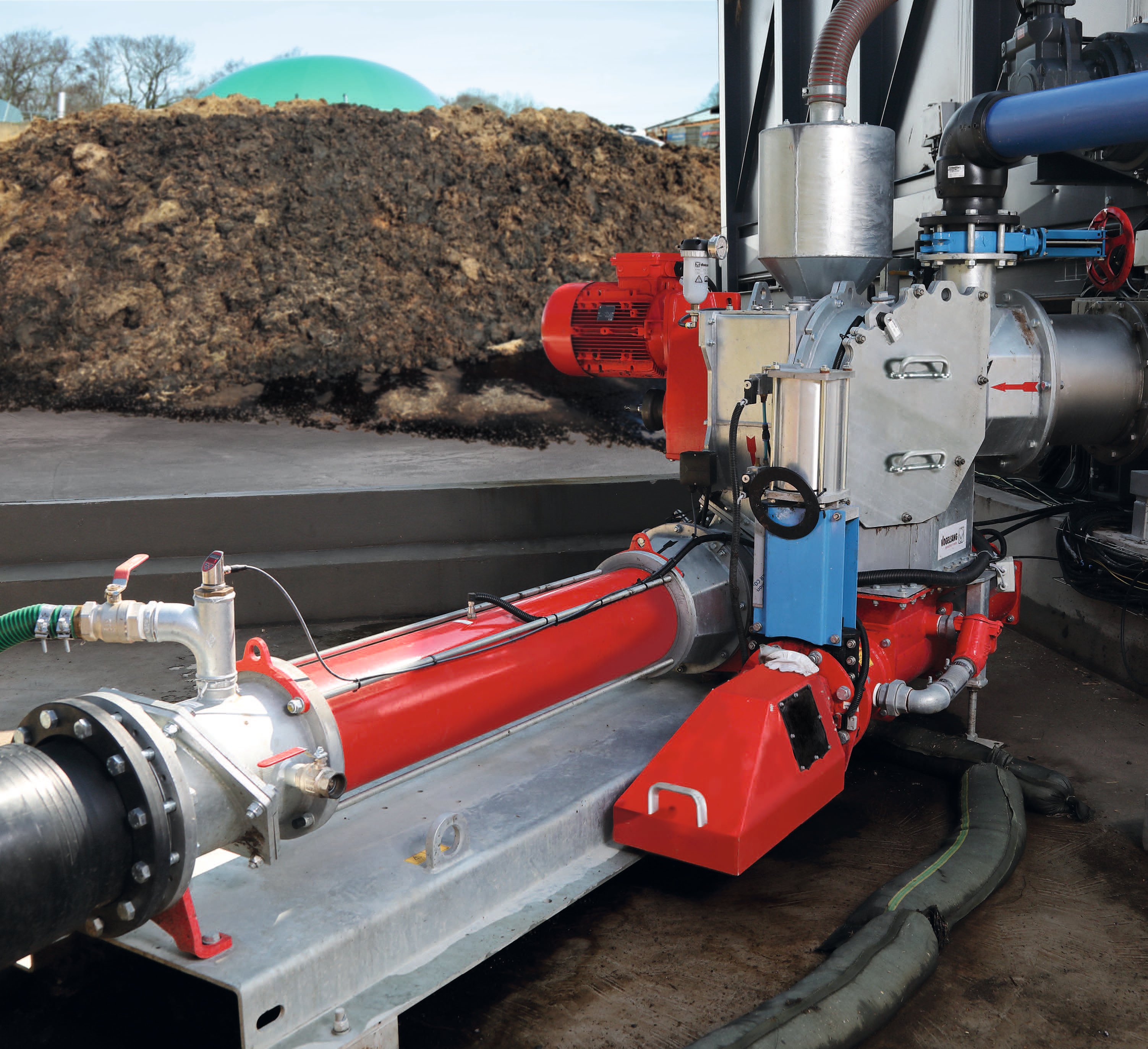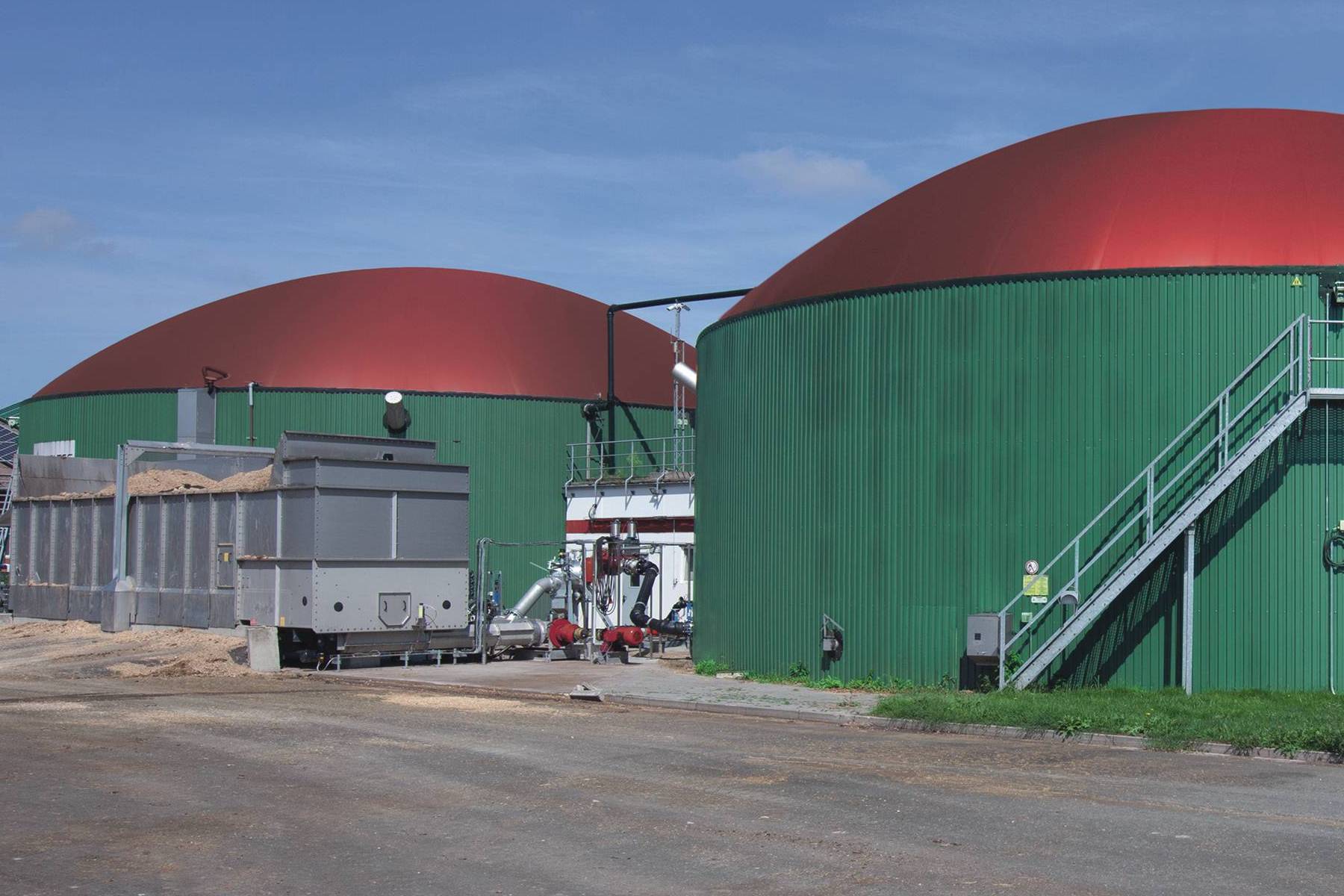The saver – efficiency booster DisRuptor

Lower power requirement, more gas yield
In a field trial, specialists from Ruhe Biogas tested the DisRuptor from Vogelsang on a biogas plant owned by Ruhe Agrar. The result encouraged Ruhe Agrar to have another seven DisRuptor disintegration systems installed.
Ruhe Biogas specializes in combined heat and power plant (CHP) services, maintenance and service work on fermentation line components such as pumps and mixers, and optimization of the fermentation line. The company also supplies the right plant technology for biogas plants that want to produce Bio LNG (Bio Liquefied Natural Gas). The liquefied biogas is used as a green fuel in the transport sector, among others.
Production using their own biogas plant is an interesting alternative for operators.
Ruhe Biogas emerged from Ruhe Agrar GmbH in 2018. All of Ruhe Biogas’ service technicians have previously worked as plant operators on Ruhe Agrar’s biogas plants themselves – the service provider’s extensive practical experience sets it apart from many of its competitors. In addition to Ruhe Agrar, other plant operators also value the know-how of Ruhe Biogas employees. This is because the service technicians know exactly what it means if, for example, a CHP unit fails or has to be shut down for several hours for maintenance purposes.
Increase efficiency of the fermantation lines
In 2019, an interesting job came up for Ruhe Biogas. Ruhe Agrar was looking for ways to increase the efficiency of the fermentation lines at its biogas plants. Ruhe Agrar owns farms in Lower Saxony, Brandenburg and Mecklenburg-Western Pomerania as well as seven biogas plants with 1 x 75 kilowatt
(kW), 1 x 190 kW, 1 x 500 kW and 4 x 2.74 MW nominal power.
The four large biogas plants have the same design: They have two identical fermentation lines, each with its own feeding lines, as well as two final storage facilities. A CHP unit is installed on the plants additionally providing the necessary heat for heating the digesters, also supplies electricity for operation of the plant itself. Other than that, each plant has a district heating network and four additional satellite CHP units that generate heat close to the consumers, such as private households and public institutions. Ruhe Agrar relies on gas engines, which are maintained and, if necessary, overhauled by Ruhe Biogas. The electrical energy produced is fed into the grid.
Although the plants have liquid feeding systems in which the solids are prepared and mixed in a batch process, Ruhe Agrar developed the idea of additional preparation of the substrate, since high proportions of grass or whole plant silage (WPS) are used.
Plant optimization based on mechanical disintegration
The biogas plant at the Darchau site provided ideal conditions for a field trial. It is located close to the company headquarters in Lüsche and ferments the highest proportion of WPS and grass silage, which sometimes has a very woody structure here. In addition to approx. 80 to 90 tons of liquid manure, approx.
125 tons of renewable raw materials are fed into the plant daily, half of which is corn silage/grass silage and half WPS. In addition to electricity, the plant in Darchau produces about 7.3 million kilowatt hours (kWh) of thermal energy annually, replacing about 780,000 liters of heating oil.

 The Darchau biogas plant’s operating site includes storage areas for up to 45,000 t of input material
The Darchau biogas plant’s operating site includes storage areas for up to 45,000 t of input material
In 2019, Justus Ruhe, a student at the time, completed an internship semester at Ruhe Biogas and took over supervision of the field trial to increase efficiency in Darchau. To obtain a meaningful test result, the experts integrated the DisRuptor, Vogelsang’s mechanical disintegration system, into just one of the two fermentation lines on a test basis. After a few initial difficulties, which were quickly resolved in cooperation with Vogelsang, the DisRuptor has since been mechanically processing the recirculate used for liquid feeding before it is conveyed to the mixing tank. The solid matter and fibers contained in the suspension from the digester are shredded and defibered in the narrow gaps in the adjustable functional unit. It breaks up and damages protective components that are difficult to degrade, such as lignin structures. At the same time, it increases the surface area and thus the area exposed to the bacteria.
 Justus Ruhe, technical sales at Ruhe Biogas, supervised the field trial in Darchau.
Justus Ruhe, technical sales at Ruhe Biogas, supervised the field trial in Darchau.
Impressive results
Both fermentation lines were then fed with the same input materials, with the gas pressure in the digester
being measured and used to determine the amount of the feed ration. In addition to the feed quantity, the gas yield was also measured. The analysis of the measurement data produced some impressive results:
With the same gas yield, the fermentation line with the DisRuptor required an average of six percent less input material. This saving alone pays for the investment in the system within a short time.
 The DisRuptor mechanically prepares the recirculate used for mashing.
The DisRuptor mechanically prepares the recirculate used for mashing.
Those involved even noticed further improvements, some of which they only became aware of very gradually. For instance, over time they found that the fermentation process with the DisRuptor was more robust and stable, and less prone to malfunctions. The handling of the digestate as liquid manure is also easier. They also established that, after a longer period of time, the biogas plant’s energy requirement had reduced by between seven and ten percent. And this despite the fact that two additional power consumers are integrated into the system: In addition to the drive energy for the DisRuptor itself, the recirculate now no longer flows in freefall to the mixing tank, but is in-stead pumped to the DisRuptor. This is offset by a shorter runtime of the feeding system with two large consumers. Alongside the pusher floor, which adds the solid matter, the mixing system now also processes six percent less feed. In addition, the runtime of the the mixer of the feeding system itself has been shortened. The pumps and mixers also consume less power thanks to the reduced viscosity of the suspension. Optimizing the mixer running times is still on the to-do list.
Ruhe Agrar and Ruhe Biogas are convinced the results. The DisRuptor has been installed in all eight fermentation lines, where the results from the field trial in Darchau have been confirmed. In the future, Ruhe Biogas will also recommend the DisRuptor to other customers, and further projects are already being planned.

